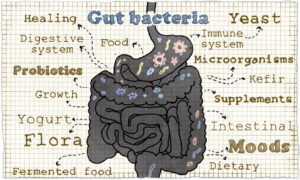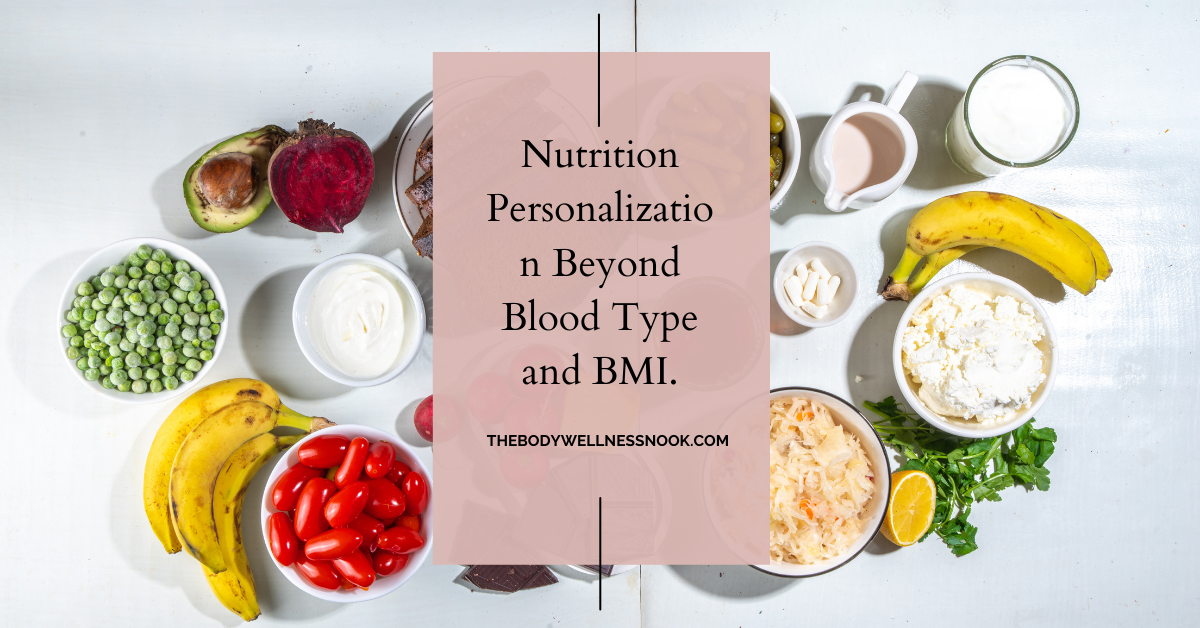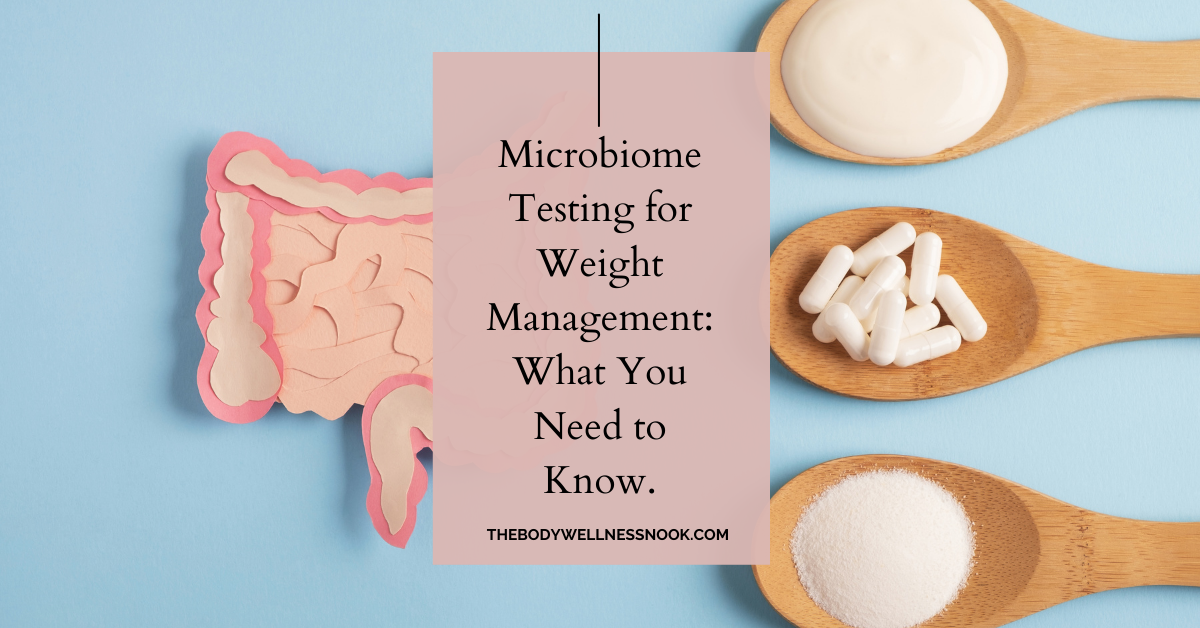Understanding Microbiome Testing
Exploring microbiome testing might sound like diving into a foreign land, but it’s an eye-opening way to discover what’s really happening in your belly. I’m here to guide you through this fascinating peek inside.
Importance of Microbiome Testing
Microbiome testing uses a stool sample to measure the critters hanging out in your gut. This gang includes bacteria, viruses, fungi, and other tiny inhabitants. Knowing your microbiome can give you a glimpse into your health, from munchies mishaps to how you’re feeling overall (Healthline). It’s especially handy for spotting troublemakers that could be messing with your health.
By scrutinizing your microbiome, you get to know the micro-lodgers in your gastrointestinal (GI) tract (Medical News Today). Such knowledge is like finding buried treasure when crafting your meal plan and knowing how to boost your gut’s health.
For more juicy details on why microbiome testing is the bee’s knees, hop over to our page on microbiome testing benefits.
Types of Microbes Analyzed
When I got into the microbiome testing game, I was blown away by all the different microbes. Here’s a peek at the main players in the gut testing scene:

- Bacteria: These are your gut’s heavy hitters, essential for digestion, keeping your immunity on point, and generally helping you shine.
- Viruses: Sure, some are party crashers, but plenty just chill there, keeping bacteria in check.
- Fungi: These guys pitch in with nutrient handling and ensure your gut vibe stays positive.
Stool samples are the go-to for microbiome analysis, offering a golden chance to study your gut’s drama and detect any trouble (NCBI).
| Microbe Type | Role in the Gut |
|---|---|
| Bacteria | Digestion; boosts immune function |
| Viruses | Keep bacterial squads balanced |
| Fungi | Help process nutrients; maintain harmony |
Once collected, the data gets worked over to turn DNA sequences into a breakdown of who’s who in your gut. This info is key for health inspections and discovering how your microbiome affects you (NCBI).
Unraveling the secrets of your gut microbiome leads to personal insights, paving the way to better gut health. If you’re a newbie, check out our guide to microbiome testing explained and get the full scoop on what’s what.
Impacts of Gut Microbiome Imbalance
So, your gut. It’s not just there for storing last night’s questionable dinner choice. Nope, it’s home to a bustling community of tiny creatures – your gut microbiome. These critters are the hidden heroes behind keeping you feeling chipper, aiding digestion, shielding you from the nasty stuff, and even brightening up your mood. But when things get outta whack, chaos can kick in.
Signs of Gut Microbiome Imbalance
How do you know if your gut’s throwing a tantrum? A few telltale signs might tip you off:
- Bloating
- Changes in bowels
- That familiar fire-in-the-chest, heartburn
- Tummy troubles
You might also notice feeling under the weather more often, strange skin stuff, or even a grumpy mood. Catching it early can save you from a spiral of worse health woes. Want more dirt on your digestive pals? Check out our deep dive into gut microbiome health.
| Symptom | Frequency (%) |
|---|---|
| Bloating | 35% |
| Changes in Bowels | 25% |
| Heartburn | 20% |
| Tummy Troubles | 30% |
Data sourced from Healthline
Health Effects of Imbalance
An unbalanced gut can mess with more than just your bathroom routine. Here’s how it plays out in the body:
- Inflammatory Conditions: If you hear scary words like Crohn’s or colitis, blame the bugs. A peek at your microbiome test results might reveal how they’re stirring up trouble.
- Metabolic Glitches: Everything from those extra pounds to blood sugar swings could have ties to a less-than-eclectic gut. Tweaking it with personalized probiotic advice might help.
- Autoimmune Headaches: When the body wages war on itself, think rheumatoid arthritis and lupus, the gut could be the secret antagonist. Delve into microbiome and autoimmune health for the scoop.
- Digestive Drama: Frequent bouts of constipation, diarrhea, or the perpetual IBS nightmare could point to microbial mayhem down below. Our guide on microbiome testing explained can clear things up.
| Health Issue | Microbiome Impact (%) |
|---|---|
| Inflammatory Conditions | 30% |
| Metabolic Glitches | 25% |
| Autoimmune Headaches | 20% |
| Digestive Drama | 25% |
Numbers are based on expert guesstimates.
Being clued up on these impacts primes you to tackle sanity in your system through a mix of nutrition wizardry and smart health tactics. Curious how your gut might be messing with your mind? Peek into microbiome mental health.
For fresh takes and a roadmap to a happy gut, click on personal microbiome know-how.
Insights from Microbiome Testing
Let’s chat about this fancy thing called microbiome testing. It’s like having Sherlock Holmes peek into your tummy to spill the secrets about your health! I mean, who doesn’t want to know what’s going on inside their gut? We’re diving into how these tests can give us the lowdown on inflammatory conditions and autoimmune diseases.
Clues for Inflammatory Conditions
Here’s where it gets interesting. Microbiome tests can act like a crystal ball, giving hints about issues lurking beneath the surface. Disorders such as inflammatory bowel disease (IBD) and Celiac can tiptoe into your life accompanied by subtle changes in your gut’s micro universe. A simple stool sample can uncover these mysteries before they spiral out of hand, potentially catching inflammation in its tracks, as explained by the folks over at Healthline.
The test basically checks out the balance between the helpful and not-so-helpful critters living in your gut. If some bacteria decide to throw a house party and others don’t show up, it might lead to inflammation woes. Knowing this early can be a game-changer, helping you tweak your diet or pop the right probiotics to keep things chill. Read more about that in our piece on personalized probiotic recommendations.
| Condition | Biomarkers Kickin’ In |
|---|---|
| Inflammatory Bowel Disease (IBD) | Sky-high levels of bothersome bacteria |
| Celiac Disease | Red flags for gluten intolerance |
| Colorectal Cancer (CRC) | Extra protein fermentation party with stinky gases like hydrogen sulphide and ammonia |
Identification of Autoimmune Diseases
Now, for all the wannabe doctors and DIY health detectives, microbiome tests could help spot autoimmune disease traits. Think about it like a gut fingerprint – everyone’s is different. Genetics, what you eat, and even how you entered this world can shake up your gut’s gang (University of Utah Genetics). All these factors can trigger conditions like obesity and type 2 diabetes because, well, our gut microbiome is a busy body.
Those with autoimmune quirks often sport a unique mix of gut residents compared to their peers. With a microbiome test, these unusual microbial mixes can be identified, offering clues into potential autoimmune diseases. They can even sniff out certain proteins from food that might stir up trouble. This info lets you tweak your meals to dodge some health bullets. More on that in our guide on microbiome autoimmune health.
| Autoimmune Disease | Microbial Mix-Up |
|---|---|
| Type 1 Diabetes | Not much diversity in gut residents |
| Systemic Lupus Erythematosus (SLE) | Too much of some bacteria species |
| Multiple Sclerosis (MS) | Lopsided mix of inflammatory and soothing bacteria |
To delve more into how this gut info can turbocharge your health journey, meander over to our links on microbiome testing benefits and microbiome immune system. These tests shed light on what you can do to grab the reins of your health, customizing your nutrition and lifestyle to fit your unique biological story.
Exploring Home Microbiome Tests
Thinking about my gut health can kick off with a home microbiome test. These kits dive into the microscopic life hanging out in my belly. But hold up, let’s consider a few things before jumping in feet first.
First Step in Gut Health
Home microbiome tests are like a peek into what’s happening in my gut town. It’s as simple as gathering a sample of my stool, yep, you guessed it, poop. It gets analyzed to see what kinds and how many bacteria are kicking around in my digestive tract. This info can clue me in on gut hiccups and give nudges on how to boost my health game.
| Feature | Detail |
|---|---|
| Sample Type | Poop |
| Fancy Science Method Used | DNA Magic |
| Cost Range | Under $200 |
| Subscription Plans | Available |
Based on information from Healthline and Medical News Today.
These tests spit out insights tailored to my unique gut squatters. Some companies go the extra mile, offering to track what I munch and how my gut’s doing. This goldmine of info can help customize my eating and living habits for my gut’s sake. If you’re keen on tweaking your grub habits, hop over to personal microbiome optimization.
Limitations of Home Testing
Though these home kits bring cool info about my belly buddies, they’re not without their quirks. Remember, these are not stand-ins for a real doc’s diagnosis, and they don’t get an FDA nod. If my belly’s been grumbling too much, chatting with a healthcare pro is the way to go for a full-on check.
Another hitch is that results can vary. The bacterial lineup might differ from one time to the next, possibly tossing off accuracy (Healthline). Consider the outcomes as a broad overview, not the gospel truth.
About the cost? Well, these tests can range from under $100 to climbing up to $1,000, based on the brand and bells and whistles (Medical News Today). If I’m leaning towards a more thorough analysis, a doctor’s test is a good option.
By keeping these quirks in mind, I’ll make a smarter choice about whether a home microbiome test fits the bill for me. For more nuggets on understanding test outcomes, wander over to microbiome test results interpretation.
Cost Considerations
Average Cost of Microbiome Tests
When I first thought about getting my microbiome checked out, the first thing that popped into my head was, “How much is this gonna set me back?” Turns out, your average test is usually under $200, but that can change based on what you’re looking for and who you get it from. Some of the home testing kits out there will only lighten your wallet by 100 bucks or less, while the fancier ones might just spill out your life’s savings, hitting close to a grand.
Here’s a quick glance at the typical price tags:
| Microbiome Test Type | Price Range |
|---|---|
| Basic Home Test Kit | $50 – $100 |
| Standard Home Test Kit | $100 – $200 |
| Premium Home Test Kit | $200 – $1,000 |
Factors Influencing Cost
Now, there is a bunch of stuff that’ll mess with the price of these tests, and knowing a little about ’em can save you some cash.
1. Depth of Analysis
The deeper they dig, the more it costs. Those simple tests give you the basic rundown of your gut’s little residents. You want detail, though, like the different types of bacteria hanging out in there? Well, that’s gonna cost ya a bit more.
2. Additional Features
Thinking of tracking more than just the bacteria? Maybe you wanna keep tabs on what you’re eating or get updates on your gut health? Some tests bundle those in. And if you’re into subscriptions, you can have new tests show up like clockwork, but don’t be surprised when the bill comes around.
| Feature | Impact on Cost |
|---|---|
| Basic Analysis | Lower Cost |
| Detailed Analysis | Higher Cost |
| Dietary Tracking | Extra Fee |
| Subscription Plans | Ongoing Cost |
3. Brand and Technology
The brand name and tech involved can also hit the price. They usually do some sort of DNA analysis from, well, uh, your stool. That tech ain’t cheap, and the bang for your buck can vary, too.
Want to get into the nitty-gritty of microbiome testing? Learn more about the benefits of testing and how it jives with your gut health.
To wrap it up, you gotta weigh the options. Whether you’re going for the budget option or the full VIP experience, look at how detailed you want it to be, what extras come with it, and the tech that’s behind it all. For more tips on picking the right test and boosting your gut health, check out our personal microbiome optimization page.
Personalized Nutrition and Microbiome Testing
Starting on the path to better health gets way more interesting when you factor in how your gut’s tiny residents—your microbiome—play a role, and that’s where microbiome testing comes into play. This can shed light on food choices that boost your wellbeing.
The Gut’s VIP Club
Your gut microbiome is like a bustling city of tiny citizens that keep things running smoothly, from digestion and immunity to even your nerves (ZOE). Everyone’s microbiome is different, which is why my favorite snack might make you feel lousy. Even identical twins have their own gut ‘fingerprint.’ Life’s big moments like growing up, being pregnant, or hitting menopause can jazz up or alter that mix (University of Utah Genetics).
| Group | Main Microbial Players |
|---|---|
| Healthy Folks | Bacteroidetes: 10-90%, Firmicutes: 10-90% |
| When Things Go Sideways | Proteobacteria, Verrucomicrobia, Actinobacteria, Fusobacteria |
Table adapted from NCBI
Eating Tips from Your Gut’s Report Card
When you peek into the details of your microbiome test, you may find some surprising dietary tweaks that fit your gut’s style. Here’s the scoop on typical pointers you might get:
- Too Many Firmicutes: If Firmicutes are throwing a party, cut back on sugar and the over-processed stuff—they thrive on it.
- Bountiful Bacteroidetes: A boost of these folks? Aim for more fiber, which means loading up on fruits, veggies, and all things grainy.
- Proteobacteria Alert: An alarm here might call for probiotics or some fermented yumminess to sort things out.
Tuning your diet to match your gut can make munching not just fun, but extra beneficial. Check out other ways to give your gut a high-five in our piece on personal microbiome optimization.
Do you wonder how food switches flick things on and off in your gut town? Dive into more about diet’s dance with the microbiome. Also, see how fancy gadgets like AI shake up personalized nutrition over here ai personalized nutrition.
With your gut facts in hand, taking the reins on your grub game means you’re boosting not just your meals but your lifelong health game. Dig deeper into the perks of these gut tests over here.
Connection Between Diet and Microbiome
You know, the secret sauce to a happy tummy might just be on your plate. How your diet shakes hands with your microbiome can tell us loads about smart eating. Curious? Let’s dig into how what you munch affects those tiny gut dwellers and how mixing up your meals can give your gut a glow-up.

Effects of Diet on Microbiome
Your grub dictates who’s partying in your gut. Different foods play host to various microbial guests.
- Carbs, like your pasta pals and bread buddies, nurture friendly bacteria that whip up short-chain fatty acids (SCFAs) for a gut that’s all smiles.
- Proteins and fats have their own stories. While some proteins roll out the welcome mat for good bugs, too much red meat might invite some grumpy guests.
- Fibers, those undercover heroes from veggies and fruit, act like buffet tickets for the good guys, boosting diversity and health.
A quick glance at your nutrition-gut connection would look like this:
| Nutrient | What It Does To Your Gut |
|---|---|
| Carbohydrates | Boosts those SCFA-making mates |
| Proteins | Mixed impact, depends on whether it’s from plants or animals |
| Fats | Give it a careful whirl, it can shift gut party dynamics |
| Fibers | Variety booster and breakfast for good bacteria |
The shape-shifting abilities of your gut community depend a lot on what’s in your fridge, even if you switch it up just a bit.
Impact of Dietary Changes
Switching up your diet can really shake things up downstairs. Short or long-term, diet tweaks speak volumes to your microbiome’s makeup.
- Short-term changes: Doing a little diet dance for even just a few days can make your gut bacteria sit up and take notice. Maybe up your fiber for a spell, and feel those good bugs rush in!
- Long-term changes: When you commit to a new food regime over weeks or months, your gut flora could score a permanent upgrade in diversity and function.
It’s not just your diet playing the puppet master here—things like your genes, how you came into the world, what you ate as a little tike, medicines, they all jam along in the gut symphony. But a healthy menu overture is like sweet music to your belly bugs.
For tailor-made advice to suit your unique belly, you might wanna check out our wise words on personalized nutrition science or get the lowdown on microbiome testing. Looking to finesse your belly with probiotics? Personalized probiotic recommendations might be your jam.
Future of Microbiome Testing
Clinical Applications
As we learn more about the gut microbiome’s impact on our health, it’s no surprise that microbiome testing is getting some serious buzz among doctors. They’re all kinds of interested in using the latest tech to help their patients out (PubMed Central). Since the gut microbiome’s been linked to issues like obesity, gut inflammation, and liver problems, it’s quickly becoming a hot topic.
Doctors are hoping that microbiome tests can help them:
- Spot health problems tied to the gut.
- Cook up special treatments for belly troubles.
- Customize care based on someone’s unique gut microbes.
But hang tight—most of these ideas are still being poked at in labs and need more proof. Curious about all this? Our in-depth guide on microbiome testing benefits spills the beans.
Advances in Diagnostic Technologies
Tech breakthroughs are changing how we do and understand microbiome tests. Meet the game-changer: shotgun metagenomics. It peeks at the microbiome at a super detailed level (PubMed Central). Basically, this method chops up all the DNA in a sample, sequences the bits, and gives us a wide and detailed view of the microbial world.
Shotgun metagenomics is quickly overshadowing older methods thanks to its juicy benefits:
| Technology | Perks |
|---|---|
| Shotgun Metagenomics | Detailed strain info, Wide microbe range |
| Amplicon Analyses | Cheaper (back in the day), Not as detailed |
And here’s the sweet part: the price of shotgun metagenomics is going down, which is good news for more folks wanting to get on board. But, understanding all this data can be a head-scratcher. Various algorithms, how complete reference databases are, and the ability to distinguish between microbe species make things tricky (PubMed Central).
If you’re curious enough to explore the nitty-gritty of these technologies, check out our genetic microbiome testing comparison for the scoop.
With all these strides in clinical use and tech development, the future for microbiome testing’s looking pretty darn good. As we get better with these tools, we’ll boost our powers to break down microbiome test results for spot-on diet and health tips. Got a hankering to see how AI’s shaking up meal advice with gut info? Dive into our latest findings on ai personalized nutrition and see what the buzz is about.






